What is Agile Scrum and how does it differ from traditional project management methodologies?
Agile Scrum is a framework for iterative and incremental development, emphasising flexibility and customer collaboration. It breaks projects into small, manageable units called sprints, promoting adaptive planning and continuous improvement.
Unlike traditional methods with linear processes, Agile Scrum is iterative, allowing for frequent inspection and adaptation. It prioritises customer feedback, encourages self-organising teams, and promotes a focus on delivering value early and often.
What are the benefits of adopting Agile Scrum?
Agile Scrum offers a range of benefits that can profoundly impact an organisation's ability to deliver value to its customers and stakeholders such as:
Increased Flexibility: Agile Scrum allows for quick adaptation to changing requirements and market conditions. Teams can easily pivot direction and reprioritise work to maximise value delivery.
Faster Time-to-Market: By breaking projects into smaller, manageable increments (sprints), Agile Scrum enables faster delivery of working software. This rapid iteration accelerates the feedback loop, ensuring that the product meets evolving customer needs.
Enhanced Stakeholder Engagement: Agile Scrum promotes frequent collaboration with stakeholders through ceremonies like sprint reviews and daily stand-ups. This increased involvement fosters a deeper understanding of project progress and ensures alignment with business objectives.
Improved Product Quality: With regular testing and continuous integration, Agile Scrum emphasises the delivery of high-quality, shippable increments at the end of each sprint. This focus on quality reduces the risk of defects and ensures that the product meets quality standards.
Better Alignment with Customer Needs: Agile Scrum prioritises customer satisfaction by delivering incremental value with each sprint. This iterative approach allows for early and frequent feedback, enabling teams to course-correct and align the product with customer expectations.
Empowered Teams: Agile Scrum empowers self-organising teams to make decisions and take ownership of their work. This autonomy boosts team morale, creativity, and productivity, leading to better outcomes.
Improved Risk Management: Agile Scrum promotes early risk identification and mitigation through iterative development and frequent inspection. Teams can address potential issues proactively, minimising project risks and ensuring smoother delivery.
Enhanced Adaptability: Agile Scrum fosters a culture of continuous improvement, where teams regularly reflect on their processes and adapt accordingly. This adaptability enables organisations to respond effectively to changing market dynamics and customer feedback.
Overall, adopting Agile Scrum can revolutionise how organisations approach project management, fostering a culture of collaboration, innovation, and customer-centricity.
What roles are involved in Agile Scrum?
Agile Scrum involves several key roles essential for project success:
Product Owner: Represents the stakeholders, defines product vision, prioritises the backlog based on business value, and ensures alignment between development efforts and customer needs.
Scrum Master: Facilitates the Scrum process, removes impediments, ensures the team adheres to Scrum principles, and fosters a collaborative and empowering team environment.
Development Team: Self-organising and cross-functional, responsible for delivering increments of potentially shippable product at the end of each sprint, and continuously improving their processes to maximise efficiency and quality.
These roles collaborate closely to ensure transparency, alignment with business goals, and successful delivery of valuable increments.
How does Agile Scrum handle planning and estimation?
Agile Scrum approaches project planning and estimation in a dynamic and iterative manner:
User Stories: Requirements are captured as user stories, small, manageable units of work that describe specific functionality from an end-user perspective.
Sprint Planning: In each sprint, the team collaboratively selects a set of user stories from the product backlog to work on based on priority and capacity.
Relative Estimation: Teams estimate the effort required for user stories using techniques like planning poker, which allows for relative sizing based on complexity and effort compared to other stories.
Adaptive Planning: Agile Scrum embraces change, allowing for adjustments to the plan at the beginning of each sprint based on new information or shifting priorities.
Progress Tracking: Progress is tracked throughout the sprint using burndown charts or other visualisations to monitor work completed versus planned, enabling teams to adapt as needed to meet sprint goals.
This iterative approach to planning and estimation enables teams to respond quickly to changing requirements and deliver value incrementally with each sprint.
What kind of organisational changes are required for Agile Scrum adoption?
Adopting Agile Scrum necessitates fundamental shifts within the organisation to embrace its principles fully:
Cultural Transformation: Organisations must cultivate a culture of collaboration, transparency, and continuous improvement. This entails fostering trust among team members, promoting open communication, and embracing a mindset of experimentation and learning.
Structural Adaptation: Hierarchies may need to be flattened to empower self-organising teams. Cross-functional teams should be formed to encourage collaboration and collective ownership of project goals.
Leadership Support: Leadership must champion the Agile transformation, providing the necessary resources, removing barriers, and aligning organisational goals with Agile values.
Process Overhaul: Traditional processes and methodologies may need to be reevaluated and adapted to accommodate Agile principles. This includes redefining roles and responsibilities, rethinking project management approaches, and embracing iterative development cycles.
Continuous Learning: Organisations should invest in training and development programs to equip teams with the skills and knowledge needed to succeed in an Agile environment. Ongoing coaching and support are crucial to sustain the Agile mindset and practices over time.
By embracing these organisational changes, businesses can unlock the full potential of Agile Scrum, driving innovation, enhancing collaboration, and delivering greater value to customers.
How does Agile Scrum handle risks and dependencies?
Agile Scrum addresses risks and dependencies through proactive management and frequent collaboration:
Early Identification: Risks and dependencies are identified early in the project through constant communication and transparency within the team.
Mitigation Strategies: Agile Scrum encourages teams to develop mitigation strategies for identified risks and dependencies during sprint planning sessions.
Iterative Approach: By breaking the project into manageable iterations, Agile Scrum reduces the impact of risks and dependencies, allowing teams to address them incrementally.
How do we measure progress in Agile Scrum?
Agile Scrum utilises various metrics to gauge progress and success:
Velocity: Velocity measures the amount of work completed by the team in each sprint, providing insight into the team's productivity and capacity.
Burndown Charts: Burndown charts track the remaining work in the sprint, helping teams monitor progress and identify any deviations from the sprint goal.
Sprint Goals Achieved: Successful completion of sprint goals indicates progress and alignment with project objectives.
Customer Satisfaction: Regular feedback from stakeholders and customers helps gauge satisfaction with the product and ensures alignment with their needs and expectations.
Delivery of Working Software/Outcomes: The ultimate measure of success in Agile Scrum is the delivery of valuable, high-quality increments of working software to the customer at the end of each sprint.
How do we handle documentation and requirements in Agile Scrum?
Agile Scrum balances the need for documentation with the core Agile principle of prioritising the delivery of functional software (outcomes) through:
User Stories: Requirements are captured as user stories, concise descriptions of desired functionality from an end-user perspective. These user stories serve as placeholders for conversations and are continuously refined throughout the project.
Just-in-Time Documentation: Agile Scrum prioritises delivering working software over comprehensive documentation. Documentation is kept minimal and created just-in-time as needed to support the development effort.
Evolutionary Requirements: Requirements are expected to evolve throughout the project as stakeholders gain clarity and insights. Agile Scrum embraces change and allows for flexibility in accommodating evolving requirements.
Collaboration with Stakeholders: Regular collaboration with stakeholders ensures that requirements are understood and validated throughout the project, reducing the need for extensive upfront documentation.
By embracing these principles, Agile Scrum teams can strike a balance between documentation and responsiveness to change, enabling them to deliver valuable software that meets stakeholder needs effectively.
Can Agile Scrum be scaled for large projects or distributed teams?
Agile Scrum can indeed be scaled effectively for large projects or distributed teams through frameworks like SAFe (Scaled Agile Framework) or LeSS (Large-Scale Scrum):
SAFe: SAFe provides guidance for coordinating multiple Agile teams within an organisation, offering roles, events, and artifacts tailored for large-scale implementation. It ensures alignment, collaboration, and synchronisation across teams while maintaining Agile principles.
LeSS: Large-Scale Scrum focuses on simplifying the scaling process by extending the core Scrum framework. It emphasises organisational simplicity, transparency, and cross-team collaboration to enable large projects to be tackled with Agile principles intact.
Both frameworks provide structures and practices to support the coordination and collaboration needed for large-scale Agile initiatives, ensuring that Agile values are preserved while addressing the complexities of larger projects or distributed teams.
What training and support is required for teams transitioning to Agile Scrum?
For successful Agile Scrum adoption, teams require comprehensive training to grasp Agile principles, Scrum framework, and associated practices. They also need ongoing support to navigate cultural shifts and organisational changes. Training should focus on technical skills and mindset transformation towards collaboration and adaptability. Continuous coaching reinforces learning and sustains Agile practices. With the right training and support, organisations can unleash Agile Scrum's potential for innovation, value delivery, and competitiveness.
At ITSM Hub, we offer globally recognised Agile Scrum certification courses as well as coaching tailored to meet the specific needs of your organisation. Our experienced trainers, with a wealth of expertise in Agile methodologies, guide teams through the intricacies of Agile Scrum adoption.
Our training programs not only develop essential skills but also cultivate confidence in Agile practices, empowering teams to navigate the transition with ease. Through interactive discussions, real-world examples, and practical exercises, participants gain a deep understanding of Agile principles and learn how to apply them effectively in their projects.
Additionally, our coaching services provide continuous support and guidance, helping teams overcome challenges and maximise the benefits of Agile Scrum. With ITSM Hub's training and coaching, your organisation can embark on a successful Agile transformation journey, driving innovation, collaboration, and value delivery.
















